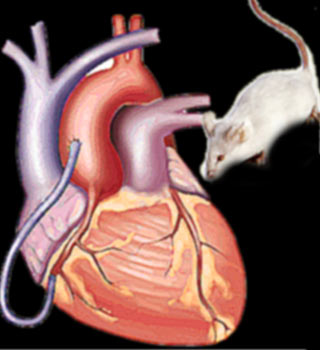
The work of Jörg-Detlef Drenckhahn of the Max Delbrück Centre for Molecular Medicine (MDC) Berlin-Buch with colleagues from Australia, the research reveals that provided some of the heart cells remain healthy, if the heart does happen to contract some disease during its embryonic development, it can regenerate itself to an extent that it actually becomes fully functional by birth.
“Hopefully, our results will lead to new therapies in the future. With the right signals, a heart that has been damaged might be stimulated to heal itself. At this point in time, the heart of the mice is like a mosaic. But even for a while after birth, the heart is capable of compensatory growth of healthy cardiac cells. Half of the cells are healthy, the other half not”, mentioned Drenckhahn.
The scientists found these results in female mice. In these mice, the healthy cells of the heart were found to divide more often and thus replaced the damaged tissue. To carry on with the research, experts switched off a gene, Holocytochrome C synthase, or Hccs in the developing hearts of mice. This gene is essential for energy production.
A wide known fact is that the heart needs energy to beat. On disrupting the energy production in the heart cells, the embryo may actually die of heart dysfunction. However when the cells are partly damaged, then with the remaining healthy cells in tandem, the embryo in fact manages to regenerate the heart.
Thus by switching off the gene, scientists found that all cells in the heart were affected by the defective energy production and the embryos died. However, some of the test mice who still had some healthy myocardial cells managed to survive. In fact these mice were born with a heart that was fully able to function.
Located on one of the sex chromosomes, the X chromosome, the Hccs gene is present in different forms in females. Male animals have only one X chromosome while females have two X chromosomes. Some of the altered female mice have an X chromosome with the defective Hccs gene and one with the intact Hccs gene. In the cells of the female animals, only one X chromosome is active. Diseased heart cells develop depending on which Hccs gene is healthy or diseased.
The scientists divulge that until birth, the foetal heart can improve the ratio of healthy cells to defective cells from the original 50:50 ratio. So the defective cells at birth only make up for 10% of the entire heart volume if healthy cells are regenerated.
With successful results on the mice heart scientists are hopeful the research may apply to humans as well.
